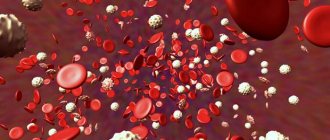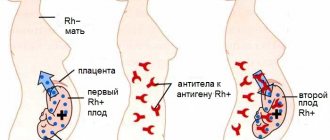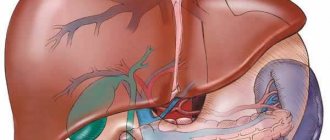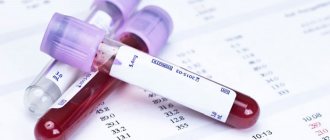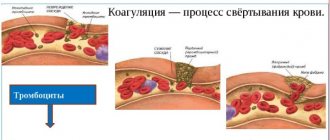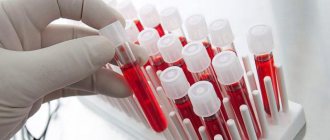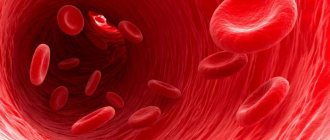The human immunodeficiency virus is a dangerous infection in which defense mechanisms are disrupted, and the patient becomes especially susceptible to any disease. It can remain in the blood for a long time and not manifest clinical signs. However, a person becomes a carrier of the virus and poses a danger to others. With timely diagnosis and treatment, the patient’s condition can be maintained at a stable level and complications can be prevented. In advanced cases, acquired immunodeficiency syndrome (AIDS) develops, which is a life-threatening condition. Diagnosis of the disease is simple, and the procedure can be performed anonymously in many medical institutions.
Indications for analysis
It is recommended for all people to donate blood for HIV, regardless of gender and age. This is due to the long incubation period (up to 6 months or more) and the high ability of the infection to spread. Some patients may not know about their diagnosis for many years. Today, the practice of regularly donating blood for HIV and other viral diseases (hepatitis, herpes and others) is becoming popular. To do this, it is enough to go to a public hospital or a private laboratory once a year and donate one portion of blood for all tests.
The immunodeficiency virus is present in human biological fluids and is transmitted with them. You can become infected at any age, with the most common method being unprotected sexual contact. And the infection can also spread directly through blood: through transfusion, contact with unsterile instruments, syringes. The vertical route is also known, when the virus is transmitted from mother to fetus during pregnancy. HIV tests can be carried out without indication, but there are several categories of people for whom they are especially recommended. These include:
- women during pregnancy and when planning it;
- medical personnel, laboratory staff;
- representatives of some professions (armed forces, food industry workers, teachers);
- donors.
The immunodeficiency virus goes through several successive stages of development. At the first stage (up to 3–6 months), it does not manifest itself clinically, but the person is already a source of infection. Next, the concentration of the virus in the blood increases sharply, and this condition can last for several weeks. In some cases, symptoms similar to those of a cold are observed (fever, weakness, headache), but they are nonspecific. This is followed by a long asymptomatic period when the person’s immune system fights the disease. Changes in health, including constant weakness and headaches, frequent infectious diseases, disruption of the digestive tract and sudden weight loss, may also be grounds for testing your blood for HIV.
Hepatitis infection
In most cases, the disease is transmitted through waste products. The bulk of the virus leaves the body through feces. In addition, sweat is also a waste product, particles of which remain everywhere. In the absence of open bleeding wounds, hepatitis is easy to avoid - just maintain basic hygiene. The second way to become infected with hepatitis is to have sexual contact with an infected person. The third method is mixing the blood of an infected and healthy person. In some poor countries, hepatitis is epidemic. In such places, even the water may be contaminated.
The possibility of hepatitis infection should be clarified:
- Viruses of forms B - D and C - G are transmitted through sexual contact, in the absence of contraception. People who frequently change partners, as well as workers in the relevant industry, are at risk. You should be tested for hepatitis four times a year.
- During surgical interventions in diseases in which donor blood is used. In rare cases, up to two percent of consumable material is found to be infected with hepatitis. Detection of the virus strain is possible with additional testing before use.
- Hepatitis can enter the body through a needle used in a piercing or tattoo. With improved equipment and sanitation standards, such situations are becoming less common.
- The rarest possibility of hepatitis infection is vertical, that is, transmission of the disease from mother to fetus. The greatest chance of infection is in the third trimester with the development of an acute form of the virus.
- In two out of five cases, the source of the disease is unknown.
Popular Regular holiday with Zika symptoms as a gift
Treatment of hepatitis depends on the form of the disease, stage and other factors, such as concurrent pathologies. Many strains are curable, except for category C hepatitis, for which there is no vaccine. The duration and complexity of therapy depend on the duration and stage of the disease at the time of detection.
How to properly prepare for the procedure?
Donating blood for HIV is a planned procedure for which it is important to properly prepare. Including informational consultation with the patient is important - it can be obtained in any hospital or clinic. It is important to know where the blood is drawn from, whether you need to follow a special diet before the procedure, and how long it will take to get results. Preparation is simple, and blood sampling will take no more than 5–10 minutes.
Venous blood is required for the study. In most cases, it is taken from the veins of the forearm, so it is recommended to wear sleeveless clothing or with loose cuffs. No special preparation is required; it does not differ from the requirements for donating blood for any viral infection. The material is taken in the morning on an empty stomach, but many laboratories allow a light breakfast. It is recommended to refrain from consuming fatty foods and alcohol a few days before the test. You must have any identification document with you - it will be needed when registering the patient and receiving test results. The answer is usually prepared within 24 hours. Many laboratories offer an anonymous HIV test, and you do not need to provide a passport. However, such a result cannot be provided in public hospitals, at the place of work, or to the Infectious Diseases Registration Department.
Dietary restriction before taking tests
Diet, composition of food consumed and periods of fasting have a significant impact on the results of laboratory tests. After eating, the concentration of some metabolic products in the blood changes. This occurs as a result of hormonal changes that occur after the digestion of food. Determination of some indicators in blood samples taken after meals may be difficult due to the natural turbidity of the biomaterial. Therefore, the analysis is done only on an empty stomach.
You need to have dinner 8–10 hours before collecting biomaterial. It is advisable that this be a small portion of a light dish. You can't eat later. The ban also applies to drinks. Even a small amount of sugar can affect the test result. Doctors advise not to brush your teeth before tests because sugar is added to toothpaste. You can drink some water before the appointed time.
Some patients refuse food several days before the procedure, not knowing whether they can eat. Prolonged fasting can also distort the results. After 2 days of fasting, the concentration of bilirubin in the blood increases. Bilirubin (bile pigment) is an important indicator of the study. Its value makes it possible to determine the stage of hepatitis and assess the degree of damage to hepatocytes (liver cells). Not eating for 3 days leads to a decrease in glucose levels, an increase in the amount of triglycerides and free fatty acids. At the same time, cholesterol levels change little.
Meals on the eve of laboratory tests should be nutritious. In order for tests for hepatitis to be reliable, during the day before the collection of biomaterial, you need to remove spicy, fatty and very salty dishes from the menu. Eating high-fat foods can cause increased concentrations of potassium, fats and enzymes. The level of enzymes increases especially strongly in patients with blood groups I and II.
Fatty foods can cause clouding of biological material. Eating large amounts of butter or cheese the night before the procedure may make the test impossible. In this case, the doctor will order a repeat test.
It is not recommended to eat orange and yellow vegetables before donating blood. They are rich in carotenoids, which can increase bilirubin levels in the body.
Blood test methods and interpretation of results
The human immunodeficiency virus cannot be detected by routine blood tests, clinical or biochemical. Modern diagnostics include techniques for isolating viral RNA, as well as determining natural antibodies produced by the body in response to infection. However, some indicators during a general examination may become a reason for a more detailed examination. Thus, HIV multiplication leads to a decrease in the number of white blood cells - protective cells of the immune system.
Qualitative analyzes
A qualitative blood test for HIV assumes a positive or negative result. During the analysis, it is possible to detect the presence or confirm the absence of a virus in the material, but not to calculate its quantity. Such methods are suitable for routine diagnosis and if HIV is suspected. They are based on serological reactions - those carried out with blood serum. There are two main ways to determine HIV infection, and the test will show reliable results within a few weeks after infection.
- ELISA (enzyme-linked immunosorbent assay) is the simplest way to diagnose HIV. It involves combining blood with reagents containing viral antigens. If a person has developed antibodies, they will enter into an immune reaction and destroy the virus. The formation of antibodies indicates the presence of the virus in the body: they are formed several weeks after infection, and in some cases, several months later. The accuracy of blood testing using the ELISA method is up to 98%.
- Immunoblotting is a more reliable and expensive analysis. The need for it arises only if the ELISA shows a positive result at least twice. The essence of this research method is an enzyme-linked immunosorbent assay with preliminary exposure to viruses by electrophoresis. This is how viral antigens are separated by molecular weight. The accuracy of the study reaches 99.7%.
The results of the ELISA can be positive, negative or questionable. When receiving the latter, additional research will be required in the same way. Next, you can perform an immunoblotting procedure if there is a suspicion of infection. After the reaction is completed, it is necessary to examine test strips containing different types of antigens (gp41, gp120, gp160). If the blood has reacted with all types of antigens, the presence of HIV can be considered established. In other cases, an additional reaction will be required.
Quantitative analyzes
Quantitative methods allow not only to detect HIV in the blood, but also to calculate the concentration of the virus. The study is carried out using the PCR (polymerase chain reaction) method and is suitable for both primary diagnosis and monitoring the effectiveness of treatment. For this test, blood is also drawn from a vein, then it is placed in a special analyzer. The reaction is to look not for antibodies to the infection, but for viral RNA. The method is more informative and accurate because it shows the degree of infection of a person. It is used, among other things, for early diagnosis after suspected infection, before starting and during antiviral therapy, as well as during pregnancy, to determine the need for cesarean section.
Tests for chronic viral hepatitis
Chronic viral hepatitis is a disease with a diffuse inflammatory process in the liver and lasting more than 6 months. Read about tests for acute viral hepatitis here.
In some cases, acute viral hepatitis from the very beginning proceeds as a chronic disease. Transition of acute viral hepatitis B into chronic viral hepatitis. better known as CHB, occurs in 10-15% of cases, hepatitis C - in 50% Hepatitis A and hepatitis E occur only as an acute disease.
The transition of acute viral hepatitis to chronic is manifested in tests:
- changes in liver tests
- high ALT activity (5 - 10 times higher than normal), which persists for over 2 months,
- presence of HBs antigen 6 months after the acute phase,
- maintaining the level of anti-HBe in the blood for more than 10-12 weeks, antibodies to the HBc antigen of the immunoglobulin class M for more than 45 days,
- the presence of anti-NS4 in patients with viral hepatitis C,
- the presence of HCVcore immunoglobulin M in the blood,
- changes in the structure of the liver,
- the presence of sensitization of T-lymphocytes to hepatic lipoprotein.
General blood test for chronic hepatitis - anemia. lymphopenia. increased ESR. In complicated forms and a malignant course - leukopenia - a decrease in the total number of leukocytes in the blood.
Urinalysis - no significant changes. With high activity of the process - proteinuria and hematuria (micro-).
Biochemical blood analysis for chronic hepatitis:
Immunological blood tests (immunogram) - a decrease in the total number and activity of T-lymphocytes and a subpopulation of suppressors, an increase in the number of T-helper lymphocytes. The concentration of immunoglobulins increases, and circulating immune complexes may appear.
A puncture biopsy for chronic viral hepatitis is an indispensable diagnostic test. The preparations reveal necrosis, lymphoid-histiocytic infiltration, frosted-vitreous hepatocytes and other changes.
Serological diagnosis of viral hepatitis - determination of markers of viral replication.
Timeframe for analysis
The timing of the analysis may vary. In government institutions, the duration of the procedure can be up to several weeks, after which the patient is informed about the result by telephone. In specialized centers and private laboratories it is possible to get an answer within 1–2 days. The results are given out in person, after providing a document or number (when conducting an anonymous study).
AIDS is a dangerous progressive disease caused by the human immunodeficiency virus. For a long time it is asymptomatic, so it is important to regularly donate blood for testing. What indicators are taken into account when making a diagnosis, how to conduct a study correctly, how to avoid false results - all these questions can be asked to a laboratory employee when submitting the material. The main thing is to come for the procedure in the first half of the day, in the morning and the day before giving up fatty and heavy foods and drinks.
What to do if hepatitis B virus surface antigen is positive
The surface antigen of the hepatitis B virus (B, B) detected in the blood is not a reason to panic. First of all, research is always carried out comprehensively.
Examining a sample for only one marker does not give clear and accurate results.
If the diagnosis is confirmed by a combination of indicators in the patient’s blood, then appropriate therapy is prescribed.
Modern medicine can cure a person quite quickly.
In 95-98 percent of cases in adults, the disease goes away without a trace. In children, hepatitis is more difficult to treat and often becomes chronic. To prevent the disease, vaccination is recommended.
Vaccine production is based on the latest genetic engineering technologies. Recombinant producers of hepatitis B antigen are transformed yeast strains of hansenula polymorpha. Their use makes it possible not to use blood components when creating a vaccine and ensures high safety.
Treatment, symptoms, drugs
To diagnose a possible disease, there are many methods that allow you to identify the disease at an early stage of development and promptly begin complex therapy. The positive side of taking tests for AIDS, syphilis, and hepatitis is that they can be carried out simultaneously, eliminating the possibility of a diagnosis error.
The human immunodeficiency virus occurs against a background of weakened immunity, with a genetic predisposition, mainly as a result of promiscuous sexual contact or contact with the blood of a carrier. Donated blood for HIV and hepatitis is the main source of information about the presence of the virus in the body.
It is believed that infection with the hepatitis C virus is unlikely through sexual contact, however, given the specifics of the disease, one cannot be sure of this. This type of hepatitis affects the liver and auxiliary organs, leading to cirrhosis and a number of oncological pathologies. To exclude the possibility of illness, blood is donated for hepatitis and HIV.
What does a biochemical blood test show for hepatitis C?
A standard research profile consists of many components, the most significant of which are summarized in the table:
| Component name | Description | Diagnostic role |
| Bilirubin | Main component of bile | An increase in bilirubin indicates the presence of anemia and liver dysfunction: cirrhosis, oncology |
| Triglycerides | Type of fat, source of energy for the whole body | An imbalance indicates problems with the heart and blood vessels |
| Albumin and gamma globulin together make up the total protein | Regulators of regeneration of damaged organs and tissues. Antibodies proteins protect the body from infectious diseases | Decreased readings confirm liver pathologies |
| Enzymes AlAt and AsAt | Immune defenders, amino acid metabolism controllers | Tangible quantitative changes indicate pathology of the heart and liver, oncology and necrosis. High level of activity indicates hepatitis virus |
| Glucose | Universal energy source | A decrease in concentration indicates problems with the liver and metabolism. |
| Iron | The component of hemoglobin responsible for providing the body with oxygen | Quantitative changes indicate anemia, pathologies of tissues and organs |
Purpose of tests and place of their delivery
Tests for HIV and hepatitis are prescribed by the attending physician after receiving and examining the patient, as a result of detecting symptoms of the disease, or after consultation with a venereologist.
A blood test for HIV (AIDS) and hepatitis on an empty stomach is mandatory when registering a woman for pregnancy. Where is blood taken for HIV and hepatitis - the most common question asked to specialists. Blood for testing is taken from the ulnar vein using a sterile syringe; the manipulation is carried out in a special treatment room. You can get tested for AIDS, syphilis and hepatitis B and C both in specialized municipal institutions and in private clinics. The advantage of private clinics is, as a rule, a more delicate and attentive attitude towards the patient. In addition, in these institutions, new diagnostic methods and methods appear faster than in municipal institutions. How long do HIV and hepatitis tests last? In view of possible changes in the body, when answering the question - “How long is a medical certificate for HIV, hepatitis valid?” - it should be noted that its validity is limited to a maximum of half a year.
After testing is ordered, a qualified specialist will provide instructions on how to prepare and submit samples to ensure a high degree of reliability of the results. After completing the first stage of testing for HIV, RV and hepatitis B and C, the turnaround time for results when using conventional (not express) methods is 4-7 days. To confirm the result, the potential carrier is scheduled for a repeat test, usually carried out several months after the first one. Often during consultations, patients ask: “A blood test for HIV, is hepatitis tested on an empty stomach or not?” Since various elements that enter the body with food can affect the results, a blood test for HIV (AIDS) and hepatitis must be taken only on an empty stomach.
The most accurate data on the state of the body and the presence of dangerous infections and viruses can only be provided by a comprehensive examination and testing for all types of possible threats to confirm or exclude them when making a diagnosis. Along with the main diagnostic methods, it is desirable to conduct examinations that indirectly reveal the presence of damaging viruses and infections (candidiasis, tuberculosis outside the lungs).
AIDS tests
The most used research method is to conduct a group of blood tests for HIV and hepatitis; blood serum is studied through serological tests. The method is a study of the liquid part of the blood, from which proteins that affect its coagulation are separated. By introducing strains of various modifications of viruses into a blood serum sample and studying the response, it is possible to find out whether the body has previously been exposed to these substances. The exact name of the test for HIV and hepatitis is “blood test for HIV, blood test for hepatitis, Wasserman reaction (RW).” The first test for AIDS and hepatitis is carried out on an empty stomach after at least a month has passed from the date of possible infection, in order to obtain a reliable result. Donating blood for HIV and hepatitis to verify the results of the first test is carried out after 1-3 months. A reliable diagnosis can only be made if there is a positive reaction in both tests. To confirm the diagnosis, a so-called immunoblot test is required, which is characterized by almost 100% accuracy of the result.
If you want to reduce the time of examination, you can use one of the express methods, for example, PCR for HIV and hepatitis. In this case, the wait before diagnosis is about 10 days, however, since its accuracy is low, it is not recommended to use it alone for diagnosis. The essence of the method is to determine the presence of DNA viruses in the blood using the polymerase chain reaction method, which is sensitive to the presence of foreign bodies and viruses in the body. This method is also used when making diagnoses of parasite infestation or when making a diagnosis of syphilis.
Even a positive result of serological blood tests and the PCR method do not provide full confidence in the presence of the disease without identifying the presence of symptoms accompanying the disease, such as HIV dystrophy, extrapulmonary tuberculosis, and candidomycosis.
Tests for syphilis
There are several known methods for conducting tests for syphilis of varying degrees of reliability, among which the most frequently used is the Wasserman reaction. The essence of the method is to take blood from a vein located on the elbow and study it for the presence of treponema pallidum. The method allows you to get an answer to the question in the form of a plus sign: “+”, meaning a negative result, “++”, meaning a dubious answer, “+++” and “++++”, meaning a positive and strongly positive reaction, respectively.
AST blood test
Unlike ASL, aspartate aminotransferase (AST) is distributed to a greater extent in cardiac and liver cells. Within normal limits, this indicator should have low values in the blood. When the muscles/liver malfunction, the enzyme is released into the blood. That is why, based on blood counts, it is possible to determine the causes of diseases and conduct a correct diagnosis. We can safely call aspartate aminotransferase a component of liver tests.
Such tests are prescribed to identify:
- hepatitis A;
- cirrhosis;
- toxic drugs.
Sometimes exceeding this indicator indicates not only problems with the liver, but can also occur with myocardial infarction.
To correctly identify health problems, along with basic tests, it is worth conducting a number of studies: bilirubin, total protein, alkaline phosphatase. This will help determine the real form of liver disease and make it possible to prescribe further treatment and effective control.
The norms or reference values of AST differ. For women these are the same values, for men they are different, for children they have their own indicators. Features of children's meanings are a distinction based on age criteria.
For patients with chronic hepatitis, aspartate aminotransferase is no more than 4 times higher than normal. The need for examination is due to the timely detection of possible serious diseases: cancer, cirrhosis, bile duct obstruction. Muscle damage or a previous heart attack may cause an increase in AST levels.
Definition of disease
First you need to understand what kind of disease we are talking about. Maybe taking the test is not at all necessary? If the disease is not too dangerous and not contagious, then everyone has the right to refuse this study.
In fact, HIV infection is extremely dangerous for humans. The disease is characterized by an infection that affects the body's immune system, destroying it. As a rule, HIV is a favorable environment for the development of AIDS. That is why it is important to understand how dangerous the disease is. AIDS is the last stage of this disease. This is an acquired and developed immunodeficiency.
Antibodies detected in blood: what does this mean?
Anti-HBs in the blood reflects positive dynamics. They appear:
- during recovery and the formation of immunity in the patient (there are no HBsAg);
- are found in recovered patients who remain carriers of the virus (hepatitis B antigen HBsAg is not detected);
- are registered in some people who have received a transfusion of blood or its components from an antibody carrier.
If the hepatitis B surface antigen (B, B) is positive in a blood sample, then we can conclude:
- acute course of the disease (gradual increase in blood levels, HbcAg, Anti-HBc are also detected);
- chronic course (antigen s of the hepatitis B virus has a stable high level for more than 6 months, HBcAg, Anti-HBc are also present);
- healthy carrier (combined with Anti-HBc);
- In young children, maternal antigens may be detected in the blood.
The simultaneous disappearance of the HBsAg antigen and the manifestation of anti-HBs antibodies is a good sign of hepatitis B (B, B). Their simultaneous presence indicates an unfavorable prognosis of the disease.
Positive nuclear IgM antibodies to hepatitis B (B, B) are detected with liver damage in the icteric and pre-icteric stage. The patient is extremely contagious to others.
When is a test needed?
Many people are interested in when to get tested for HIV. In fact, a citizen has the right to independently contact certain institutions. That is, at your own request. However, there are a number of situations in which a certificate of absence of HIV infection is required.
Among them are:
- pregnancy planning;
- recruitment;
- pregnancy (including accidental);
- preparation for hospitalization/surgery;
- weight loss, sharp and rapid;
- fever that occurs for no reason and cannot be explained by the presence of other diseases;
- prolonged diarrhea;
- frequent casual sex;
- presence of sexually transmitted infections;
- blood transfusion (after the process);
- birth (an HIV test is done immediately).
Accordingly, quite often this particular analysis is prescribed. There is nothing special or dangerous about it. Often, citizens themselves agree to conduct such research out of concern for their health. But what else do patients need to know?
How it's done?
Taking blood for markers of viral hepatitis is a simple procedure. Blood is taken from the cubital vein. It is advisable to take the test in the morning and on an empty stomach. In pregnant women, blood sampling for this analysis is possible at any time. In addition, at any time, blood is taken for markers of viral hepatitis upon admission to the hospital and in preparation for surgical operations.
It is advisable to do the analysis for people who are at risk - injection drug addicts, promiscuity (promiscuity) and unprotected sexual intercourse. Blood sampling for markers of viral hepatitis and the algorithm for its implementation are standard.
Where to contact?
For example, where to go in order to receive the named service. At the moment there are a lot of options for the development of events. It all depends on the age of the patient and his preferences.
An HIV test is done:
- in maternity hospitals;
- hospitals;
- clinics (adults and children);
- private clinics;
- private laboratories;
- other medical institutions.
Where exactly should I go? There are no exact recommendations. Each citizen decides for himself how and where exactly to get tested for HIV. Readiness times often depend not only on the research system, but also on the place of application. As practice shows, in government institutions you have to wait longer for test results. In addition, private medical centers, clinics and laboratories sometimes offer a wider range of disease diagnostics. Therefore, it is necessary to take into account that an HIV test can be taken in several ways.
PCR diagnostics
The first and most common test option is PCR diagnostics. It is used very often to determine any disease. As practice shows, it is an extremely informative study when it comes to taking sputum for analysis (for example, for hepatitis or tuberculosis).
However, PCR diagnostics are often used when blood is taken to test for HIV infection. It should be borne in mind that there are several types of this disease. PCR analysis detects with high accuracy only the presence of infection. But he does not determine her type. Therefore, people do not always agree to this study.
Analysis process
It is allowed to donate blood for analysis at home or in a hospital. The procedure requires sterile instruments and disposable materials. Before it begins, the patient’s forearm is tied with a tourniquet. Due to this, the blood vessels become more convex. At the next stage, the injection site is treated with cotton wool soaked in alcohol. The needle is inserted into a vein located in the elbow area.
Blood taken from a vein is drawn into a previously prepared laboratory container. After the required amount of biological material has been collected, the needle is carefully removed. Then all that remains is to press the cotton swab to the injection site. The patient is advised to clench his arm at the elbow. This is done in order to stop the bleeding and prevent the appearance of hematomas.
If the procedure is carried out in full accordance with the correct technique, it will not cause any discomfort. The blood is delivered to the laboratory as soon as possible. In 2 hours it will be too late. If the patient becomes ill during the procedure, the nurse uses ammonia.
Immunoblotting
What other HIV test is there? Readiness dates will be announced later. First, you should understand the methods for diagnosing the disease. In addition to the test already mentioned, immunoblotting is very popular. This is a kind of enzyme immunoassay.
It helps to determine antibodies to certain infections in the blood. Or rather, to their proteins. Typically, such diagnostics are used after PCR to confirm the result. It helps to determine the specific type of HIV infection that has entered the human body and is in great demand among the population.
For immunology
The next test that allows you to determine the presence of HIV in a person is a study that allows you to check the state of a person’s immunity.
The fact is that HIV reduces the concentration of CD-4 cells. They are called beneficial bacteria that allow the body to fight a particular disease. How can you understand that a person has HIV?
The results of the immunology test are extremely easy to understand. Normally, a person has from 500 to 1,500 CD-4 cells in the body. If this indicator is below 500, then HIV exists, but the infection appeared relatively recently. Results that indicate the presence of fewer than 200 CD-4 cells are a warning sign. This means that the disease has been in the body for a long time.
Express
Sometimes you can get tested for HIV immediately. The turnaround time for express diagnostics is about 5 minutes. We are talking about a not entirely accurate, but still effective study. It is used extremely rarely in Russia.
What is meant by this analysis? The most common rapid test. It looks like a special strip on which you need to drip blood. After 5-10 minutes, look at the result. It can be either positive or negative. The effect of this type of diagnosis can be compared to a pregnancy test.
This type of HIV testing is not in great demand. This is because there is a high probability of errors and inaccurate results. In addition, such a test does not help determine the type of infection.
Along with PCR diagnostics, ELISA analysis is often prescribed. It, like immunoblotting, allows you to determine the presence of antibodies to HIV proteins. Typically, such an analysis does not allow a definitive diagnosis to be made. It is not known for its accuracy.
Doctors point out that very often ELISA gives a false positive result. This phenomenon is caused by the molecular structure of antibodies. In most infections, it is similar to the structure of antibodies to HIV. Therefore, you can get a positive blood test result, but the real picture will indicate the opposite. In this case, the analysis is repeated or a different diagnostic method is prescribed.
Markers of different types of hepatitis
Against the background of laboratory diagnosis of viral hepatitis, the determination of markers is one of the reliable ways to identify the disease at an early stage.
Hepatitis B
Serious disease. At an early stage, there are no negative symptoms or morphological signs on ultrasound; The main route of transmission of infection is parenteral. However, with the help of markers, the disease can be diagnosed at an early stage.
The table shows the markers that are present in the patient’s blood during hepatitis B infection:
| Viral disease antibodies | HBeAg and HBsAg |
| Antibodies to antigens | anti-HBs, anti-HBe, anti-HBc |
Using an enzyme immunoassay algorithm, they not only confirm the absence/presence of the disease, but also identify the stage of the pathological process. Thanks to this, it is possible to make a more accurate prognosis and prescribe effective therapy.
Hepatitis C
Among all hepatitis it is considered the most dangerous.
According to statistics, there are more than 150 million people in the world with a history of pathology. Over 350 thousand people die every year.
Poor statistics are due to the incubation period of the disease - the absence of symptoms or their insignificant manifestation.
Hepatitis in the body can be detected using the following markers:
- HCV-RNA. It is present in the blood and liver tissues when the pathology is in the acute stage. It can be detected even immediately after infection.
- Anti-HCV total (total antibodies). In the blood it can be diagnosed 6 weeks after infection. If the result is positive, they speak of a viral agent in the body. They are detected even after complete recovery.
- Anti-HCV core IgG. They are detected in the patient’s blood only 11 weeks after infection. The presence of IgG indicates a chronic form of the pathology.
- Anti-NS3. They are always detected in the blood against the background of an acute pathological process.
Markers anti-NS4 and anti-NS5 are detected only in advanced cases when functional liver damage is observed. After the therapeutic course, their number decreases - this indicates the effectiveness of the therapy.
Botkin's disease and hepatitis E
Botkin's disease is a pathology characterized by an acute course.
A common cause of infection is failure to comply with basic hygiene rules.
Typical symptoms include:
- Yellowing of the skin (not always, but in most pictures).
- Malfunction of the gland.
- Increase in body temperature.
- Pain in right side.
There is no special preparation for the study; it is advisable to donate blood on an empty stomach. The disease is characterized by a rapid course, the absence of severe complications, and ease of treatment.
When testing for Botkin's disease, the following markers are determined:
- RNA of a viral pathogen. A sign that the virus is multiplying rapidly.
- Indicates the very fact of viral infection.
- Anti-HAV IgG. Either there is a history of pathology, or there is immunity to Botkin’s disease.
- Anti-HAV IgM is an acute viral process.
Hepatitis E is widespread in countries with hot climates. The reason is unsanitary living conditions of people. Leads to disruption of the functionality of the digestive tract, pain in the area of the right rib. A doctor should decipher the markers of hepatitis E.
The table shows the basics of decoding:
| Marker | Description |
| RNA | A positive result is a consequence of the active spread of the pathogen |
| Ag | Hepatitis E confirmation |
| Anti-HEV IgM | Acute pathological process |
| Anti-HEV IgG | Previous illness, presence of immunity |
Hepatitis D and G
Type D is understood as an anthroponotic infection, diagnosed only in conjunction with hepatitis type B.
The symptoms of these types are similar, however, when form D is added, the risks of accumulation of free fluid in the abdominal cavity and severe swelling increase.
Hepatitis markers with interpretation of the analysis:
- RNA – active spread of the infectious process.
- Anti-IOP IgM – will mean an acute course.
- HDAg – the presence of the disease, if the result is negative – there is no virus.
- Anti-IOP IgG – the patient was previously ill and has immunity.
Type G occurs only in conjunction with other hepatitis in a person’s history - with forms B, C, D. Since symptoms appear only in exceptional cases, most often they occur in a chronic form.
ELISA allows you to detect the presence of the virus, and PCR shows quantitative characteristics. Several methods are used in combination to diagnose the disease. The prognosis is favorable if detected in a timely manner; it is aggravated if alcoholic/autoimmune liver damage, HIV infection, AIDS, and other serious diseases are present.
Cost of tests
If hepatitis is suspected, the patient receives recommendations from the doctor regarding diagnosis; tests can be done in private laboratories, for example, Invitro, Gemotest, etc.
Approximate cost of research:
- Analysis to determine the disease - detection of anti-HAV IgG - qualitative research - 600 rubles, urgently 1000 rubles. In a qualitative analysis, the result is negative or positive.
- Quantitative testing for hepatitis B by determining anti-HBs 800 rubles (the result will be a specific figure).
- Diagnosis of hepatitis C will cost 1,500 rubles (two studies).
- A qualitative PCR test for hepatitis B costs about 1,000 rubles, and a quantitative PCR test costs 4,000 rubles. Ultrasensitive qualitative analysis - 3000 rubles, and quantitative analysis - 3800 rubles.
- Research into the resistance of the pathogen to antiviral agents – 12,000 rubles.
When a disease is detected, other tests are additionally prescribed to assess the condition of the liver. The principle of treatment involves a combined regimen, which includes hepatoprotectors (drugs that improve liver function), enzymes, antiviral drugs, antibiotics (if an infectious process is detected) and other medications.
source
Ready dates
The timing of blood tests for HIV varies. It is impossible to say exactly how long you will have to wait for results. After all, the answer will depend on many factors. Among them the following are often distinguished:
- type of institution;
- laboratory workload;
- selected diagnostic option.
It has already been said that in public hospitals you will have to wait longer for results than in private centers. That is why many people prefer the latter. Usually they allow you to obtain the most accurate research result in the shortest possible time.
In a public clinic, on average, the readiness time for HIV/hepatitis tests is set at 4-5 days. Moreover, as practice shows, this interval is valid for any type of study. After all, express tests are not provided in government institutions of the Russian Federation.
But the turnaround time for HIV blood tests in private clinics is often 2-3 days. But in practice, this figure decreases to a day. That is, the very next day in some private clinics the result of an HIV test will be ready. If there is an express test, then, as already mentioned, you can get one or another answer within 5-10 minutes. However, despite the speed of obtaining results, it is not recommended to use this type of research.
general description
The main danger of hepatitis is that it is difficult to detect. The only, almost 100% method of determining whether a patient has hepatitis is to do a blood test for its markers. It is thanks to these markers, acquired by an individual as a result of an illness or the administration of a vaccine, that the doctor is able to verify the diagnosis and prescribe appropriate therapy. The clinic determines markers for the following forms of viral hepatitis: hepatitis A (HA), hepatitis B (HB), hepatitis C (HCV), hepatitis D (HD), hepatitis E (HE) and hepatitis G (HG). Markers of viral hepatitis that can be determined are:
- antibodies to viral particles;
- viral antigens;
- specific antibodies to all types of viral antigens;
- fragments of DNA or RNA viruses.
How is the procedure done?
Blood is drawn from the ulnar vein in the morning on an empty stomach. During pregnancy or preparation for surgery, blood is taken for analysis at any time.
Viral hepatitis A
Viral hepatitis A (HAV) is an acute disease with a predominantly fecal-oral transmission mechanism, which manifests itself as liver damage with intoxication syndrome and jaundice. The HAV genome is represented by single-stranded RNA. Hepatitis A is the most common of hepatitis, occurring without complications, requiring minimal treatment, and often even going away spontaneously.
Indications for testing for hepatitis A:
- clinical manifestations of viral hepatitis;
- jaundice;
- increased levels of ALT and AST;
- contact with a patient with viral hepatitis A;
- examination of contact persons in foci of infection;
- determination of the presence of immunity to HAV during vaccination.
Interpretation of research results
- immunity to the hepatitis A virus has not been detected.
- anti-HAV IgM - acute stage of infection;
- anti-HAV IgG - previous encounter with HAV, immunity to this infection;
- Ag HAV—presence of HAV;
- HAV RNA—the presence of HAV and its intensive replication.
Viral hepatitis B
Viral hepatitis B (HBV) is one of the most significant global health problems, due to the trend of continuous increase in incidence, as well as the presence of adverse outcomes, including deaths, from both acute and chronic forms of HBV. The causative agent of the disease is hepatitis B virus (HBV), a DNA virus that attacks liver cells.
Indications for testing for hepatitis B:
- preparation for vaccination;
- confirmation of the effectiveness of vaccination;
- detection of HBs antigen;
- increased levels of ALAT and ASAT;
- clinical signs of viral hepatitis;
- chronic diseases of the liver and biliary tract;
- examination of contact persons in foci of infection;
- frequent parenteral manipulations in patients;
- preparation for hospitalization, surgery;
- pregnancy planning;
- pregnancy;
- donor screening;
- examination of people at risk;
- unprotected sex;
- promiscuity;
- injection.
Interpretation of research results
- immunity to the hepatitis B virus has not been detected.
- HBsAg - possible presence of HBV during acute or chronic infection, carriage of the virus;
- Anti-HBs - evidence of a previous infection or the presence of post-vaccination antibodies;
- Anti-HBc IgM—intensive HBV replication;
- Anti-HBc IgG is evidence of a previous encounter with HBV;
- HBeAg - high infectiousness of blood serum, active replication of HBV, high risk of perinatal transmission of HBV;
- Anti-HBe is evidence of completed HBV replication;
- Pre-S1—infectiousness and high risk of perinatal transmission of HBV;
- Pre-S2 - the presence of one of the forms of HBsAg (M HBsAg);
- anti-Rhe-S2 - recovery from hepatitis B;
- DNA polymerase—presence of HBV and its intensive replication;
- HBV DNA—presence of HBV and its intensive replication.
Viral hepatitis C
Viral hepatitis C (HCV) is a viral disease that often occurs in the form of post-transfusion hepatitis in its anicteric and mild forms. The causative agent HCV is an RNA-containing virus. When the disease cannot be diagnosed in the early stages, it transforms into a chronic form with the further development of cirrhosis and liver cancer, which, as a rule, ends in death.
Indications for testing for hepatitis C:
- increased levels of ALT and AST;
- preparation for surgery;
- parenteral manipulations;
- pregnancy planning;
- clinical signs of viral hepatitis;
- unprotected sex;
- promiscuity;
- injection drug addiction;
- cholestasis.
Interpretation of research results
- hepatitis C was not detected;
- the first 4-6 weeks of the incubation period;
- seronegative variant of hepatitis C.
- anti-HCV IgM—active HCV replication;
- anti-HCV IgG - about the possible presence of HCV or a previous encounter with the virus;
- Ag HCV—presence of HCV;
- HCV RNA—presence of HCV and its intensive replication.
Viral hepatitis D
Viral hepatitis D (HDV) is an anthroponotic viral infectious disease with a parenteral mechanism of pathogen transmission and predominant liver damage. The causative agent of HDV is an RNA-containing virus. HDV accompanies hepatitis B, significantly aggravating its course and promoting transformation into a chronic form.
Indications for hepatitis D testing:
- diagnosis of acute and chronic hepatitis D;
- diagnosis after hepatitis D.
Interpretation of research results
- hepatitis D virus was not detected.
- Anti-HDV IgM - intensive replication of HDV, acute stage of infection;
- Anti-HD IgG - evidence of a previous encounter with HDV;
- HBV HDAg—presence of HD;
- HDV RNA—presence of HDV and its intensive replication.
Viral hepatitis E
Viral hepatitis E (HEV) is a hepatitis with a fecal-oral transmission mechanism. Hepatitis E virus is an RNA virus belonging to the calicivirus family. The main manifestations and characteristics are similar to hepatitis A. HEV is particularly dangerous for pregnant women.
Indications for testing for hepatitis E:
- symptoms of infectious hepatitis;
- persons receiving frequent blood transfusions;
- persons on hemodialysis;
- injection drug addicts;
- screening of individuals from endemic regions;
- evaluation of the effectiveness of vaccines against HEV;
- gestosis in the second half of pregnancy.
Interpretation of research results
- No immunity to the hepatitis E virus has been detected.
- Anti-HEV IgM - acute stage of the disease;
- Anti-HEV IgG - evidence of a previous encounter with HEV and immunity to this infection;
- Ag HEV—presence of HEV;
- HEV RNA—presence of HEV and its active replication.
Viral hepatitis G
Viral hepatitis G (VHG) is an infectious disease with a parenteral mechanism of infection. It has the same characteristics and properties as hepatitis C, but at the same time it is less severe and not as dangerous. The causative agent of HCV is a single-stranded linear RNA virus. HCV often occurs in combination with hepatitis B, C and D. The infection, as a rule, ends with recovery and elimination of the virus, while anti-HCV is detected in the blood. The development of chronic HCV and long-term carriage of HCV RNA cannot be ruled out.
Indications for testing for viral hepatitis G:
- Diagnosis and monitoring of viral hepatitis G.
Interpretation of research results
- No immunity to the hepatitis G virus has been detected.
- Anti-HCV - evidence of a previous encounter with HCV and immunity to it;
- HGV RNA—the presence of HGG and its intensive replication.
source
